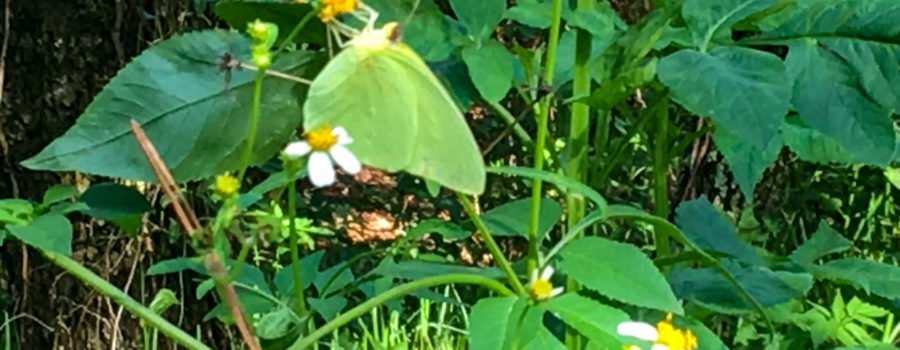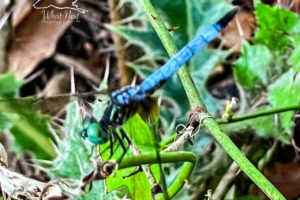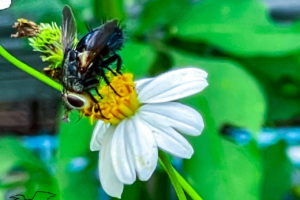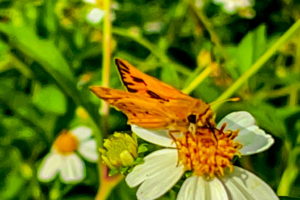Enjoying the Migration of the Beautiful Cloudless Sulphur Butterfly

Every year in the fall in central Florida we are lucky enough to witness the migration of the beautiful cloudless sulphur butterfly. Gainesville, Florida, which is less than twenty miles east and north of where I live is a well known place to go to see the migration. And being so close to Gainesville, I am lucky enough to host some of these migrants on their way south. We actually have them here as residents from late March through the summer and into November (depending on the weather), but during the migration period in September and October, we always have many more. They are an interesting species, and have some unique characteristics that set them apart from other butterflies that live in this area.

First, the cloudless sulphur has a very long tongue. That long tongue allows the cloudless sulphur to feed on nectar from trumpet shaped flowers that other butterflies can’t get to. That gives them a big advantage over other species, but it also makes them very important for pollination in those plants (bees, wasps, and other insects that can crawl down into the trumpet are also important for pollinating those flowers). Secondly, the cloudless sulphur has a strong preference for red flowers. Nobody really understands why that is, and obviously they will feed from other color flowers as well, but if you want to attract them to your yard, plant red flowers! Finally, again for an unknown reason, the males are frequently seen drinking from mud puddles.

As I have stated in several other posts (see my posts on The Two Lined Spittlebug and The Dotted Bee Fly), I don’t tend to do a lot of planting, but I do let the native plants grow in some places on the front of the property and all over the back. Even though they aren’t red, several of the native flowers are very attractive to the cloudless sulfur butterflies. So every fall, I see loads of them all over my property. In September and October this year, I spent several afternoons literally hip deep in the wildflowers photographing all the butterflies (see The Beautiful State Butterfly of Florida, the Zebra Longwing, How to Take Great Nature Photographs: Be Patient, and my video of a brush footed butterfly), but the cloudless sulphurs in particular. They are very active butterflies, and they don’t stay put for very long, so patience is the key to photographing them. They are also fun to photograph because different individuals may be marked somewhat differently. Some of the females may even be almost white depending on what they fed on during the year. Have you ever seen a butterfly migration? It can be really amazing.





Recent Comments